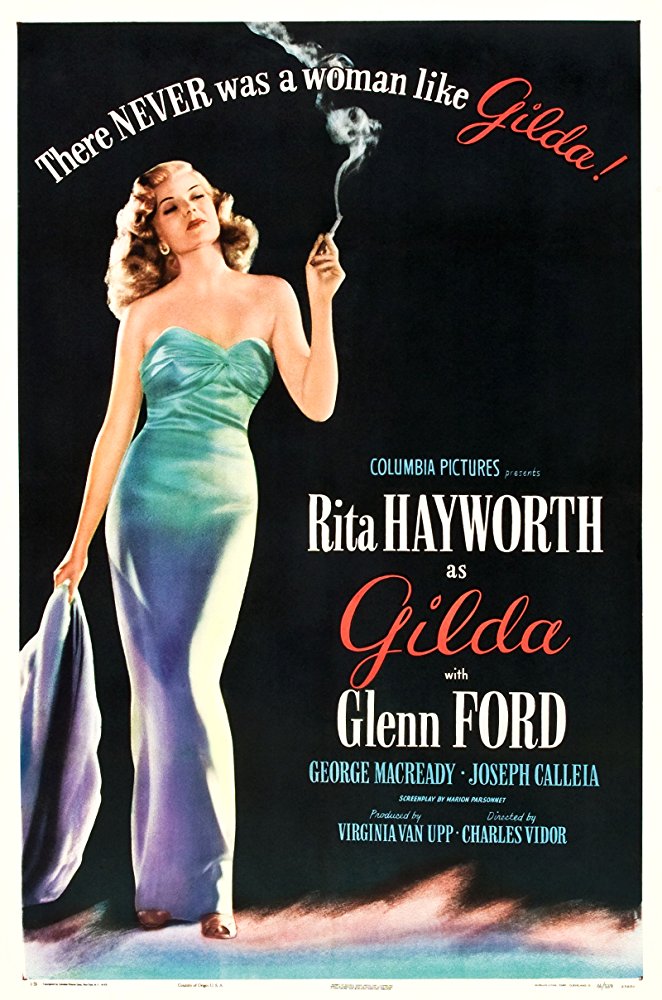
01 Mar Fashion in Classic Film Noir: Gilda (1946)
Note: Never mind this is the third in a row from 1946. Just know that was the year for film noir.
There was never a woman like Gilda, proclaimed Columbia Pictures in its campaigns for the film. And just like that, Rita Hayworth became immortalized as Gilda in one of the most successful and beloved film noirs in history. You can thank heaven for putting such an amazing cast and crew together on the picture, especially Rudolph Maté for his absolutely stunning cinematography (unparalleled, truly) and Jean Louis for the gowns.
I assume everyone has seen this film, but for those of you who have not yet, here’s the low down: The story takes place in Buenos Aires, Argentina where petty gambler Johnny Farrell (Glenn Ford), who “makes his own luck and knows just when to stop,” talks his way into a job at a casino owned by Ballin Mundson (George Macready). Johnny soon works his way up in the casino and Ballin’s trust. One evening after Ballin has returned from a trip, Johnny greets him at his home, surprised to find that his boss is now married to a woman he once knew and loved, Gilda (Rita Hayworth).
And that’s the scene from where we get this iconic moment:
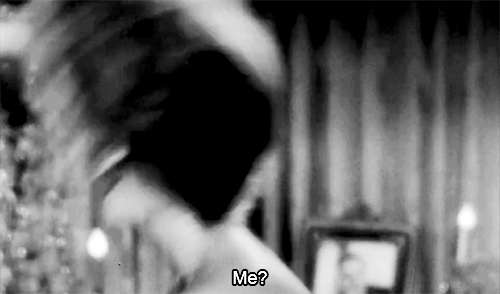
Wow.
Her frilly white chiffon negligee with contrasting sash tied at the waist and loose at the shoulders so that it consistently falls off them, is really the best summary of Gilda’s charms: Sweet and enchanting and unfailingly sexy without having to even try. This is where you could just fall in love with her at first sight because she’s so beautiful and charismatic (and what that lighting does to her features!!). Doesn’t she look like an angel in this translucent negligee?
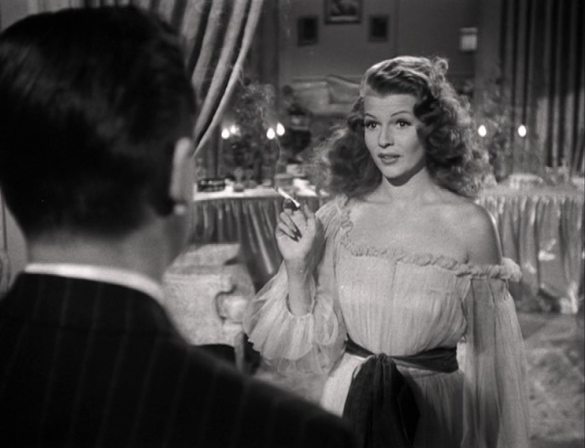
Below, an evening dress with gold trim, structured shoulders, and major pleating below the knee. The luxurious, shimmery aspect to Gilda’s wardrobe emphasize her goddess-like role.

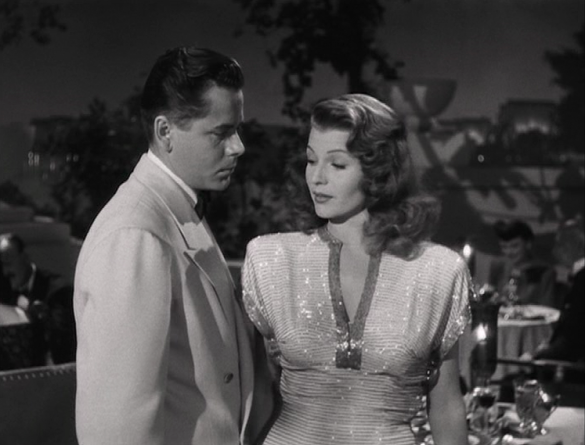
She’s certainly not easy for Johnny to resist. Their love-hate relationship is the main point of the film. Over and over again we hear some variation of the line, “hate is a very exciting emotion.” The film was overtly sexual for the time—likely the main reason for its popularity and for the critics deeming it high-class trash.
“Doesn’t it bother you at all that you’re married?”
“What I want to know is, does it bother you?”
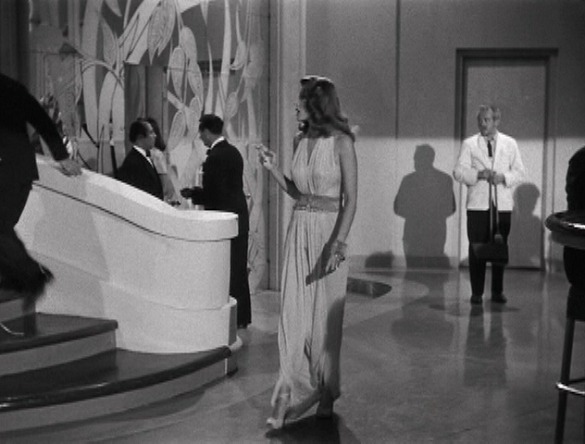
This Grecian-inspired halter neck gown with white peep toe pumps and a beaded midriff compliment Rita Hayworth’s figure so well. Again, the costume is giving us goddess vibes.
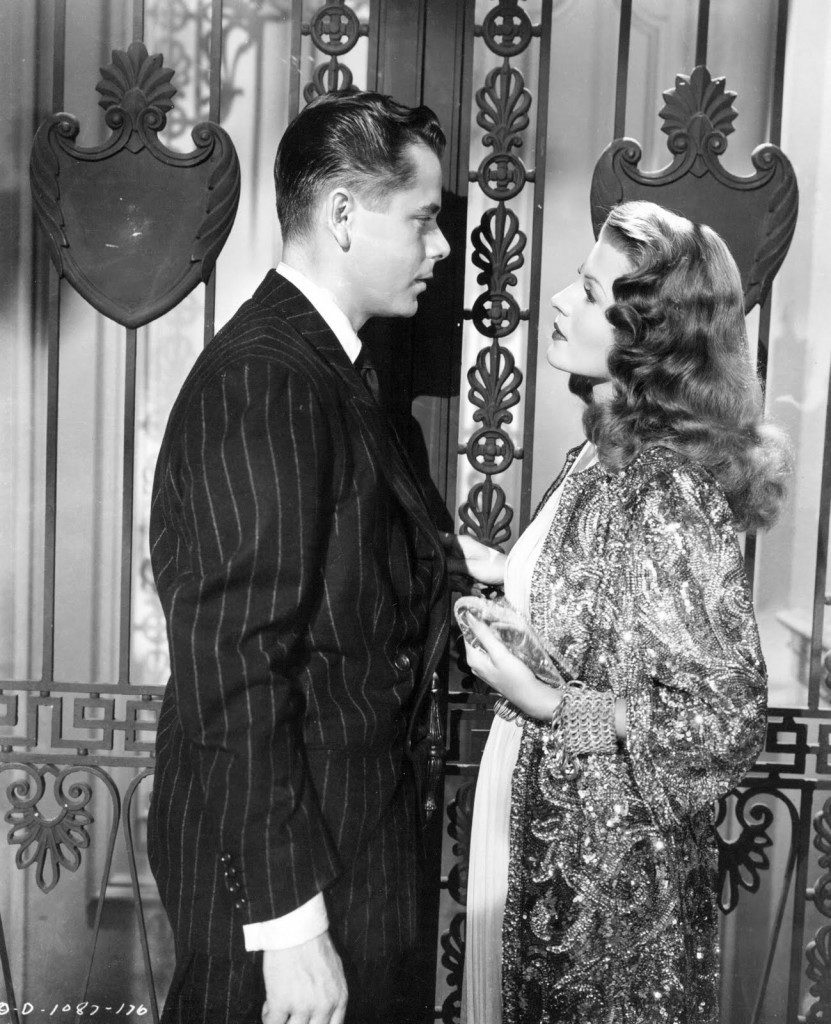
Above is the same halter neck gown paired with an extravagantly beaded and embroidered evening jacket. The way it shimmers on screen will take your breath away.
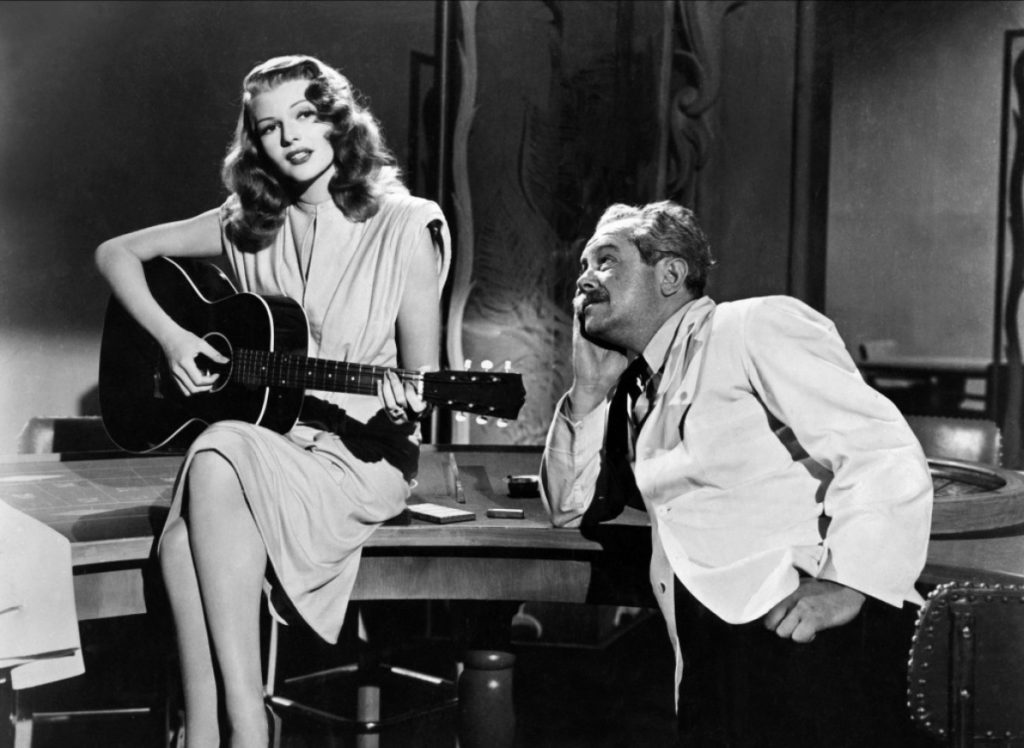
Another white outfit. This cocktail dress with a cinched waist with a studded belt is paired with matching gold bangles on her left arm. The simplicity of the outfit allows you to get a sense of the interesting contrast between soft and feminine and hard and tough. I think that mirrors Gilda’s personality perfectly.
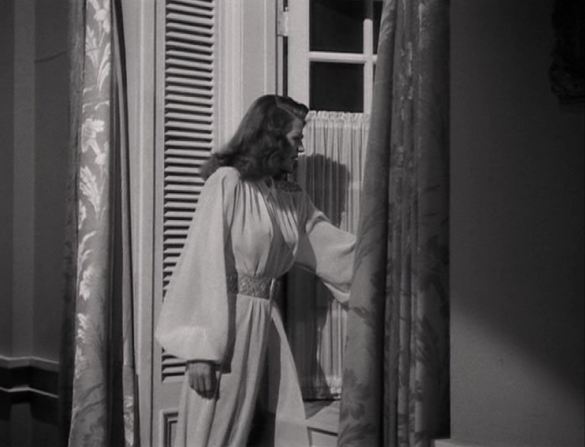
Here’s a fabulous chiffon dressing gown with balloon sleeves and embroidered shoulders and belt. We don’t see much of this one, but I’m including it because she looks like a dream.
You’ve seen a pattern in Gilda’s style by now, but it’s about to switch up a little. Gilda gets this premonition while dressing for Carnival that something bad is going to happen (after taking part in a fateful toast to “the wench”), so we get this costume:
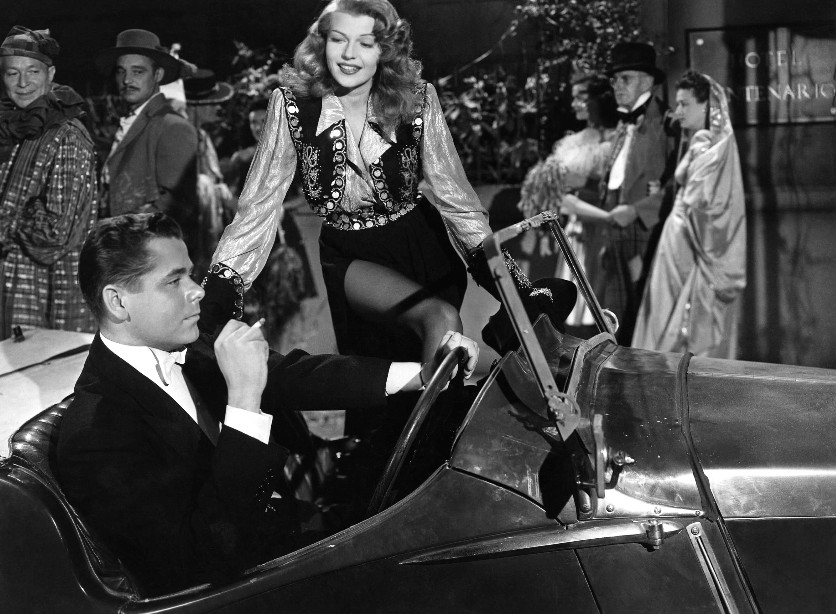
This is Gilda’s western-inspired Carnival outfit for the masquerade party, featuring a black high slit skirt, unbuttoned shimmery shirt, and matching black and gold embroidered wide belt, vest, gloves, and cowboy boots.
After this scene the film takes another turn. Mundson is believed to be dead from suicide by everyone in the film—of course the audience knows he is going to return later on for his revenge. Gilda and Johnny get married, but this is Johnny’s cruel way of getting back at Gilda. It’s kind of disturbing, but their entire relationship is about both of them trying to take the other one down. It’s a power struggle. Until this point Gilda has mostly had the upper hand, but now her defences are down, and Johnny is in the lead.
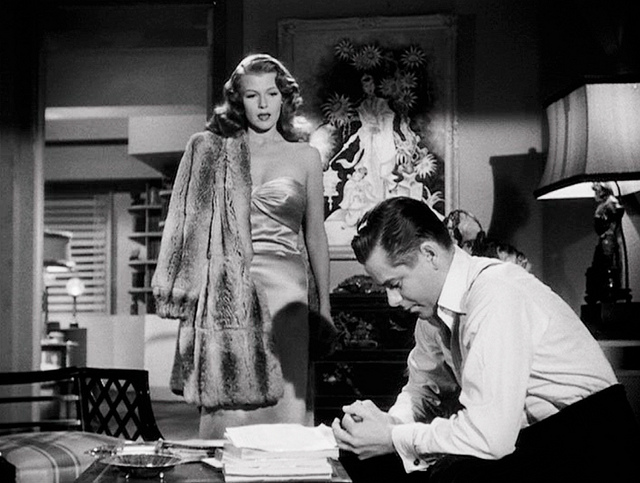
Johnny has her cooped up in her room while he stays at work day in and day out (they didn’t even spend their wedding night together). Eventually Gilda gets fed up and visits him at the casino. Above is Gilda trying to get Johnny’s attention in a strapless gold body-skimming gown tied in a bow at the back and fur coat.
In case you’re wondering, the budget for Rita Hayworth’s wardrobe was a staggering $60,000. Clearly it was a well-made investment.
Moving on…
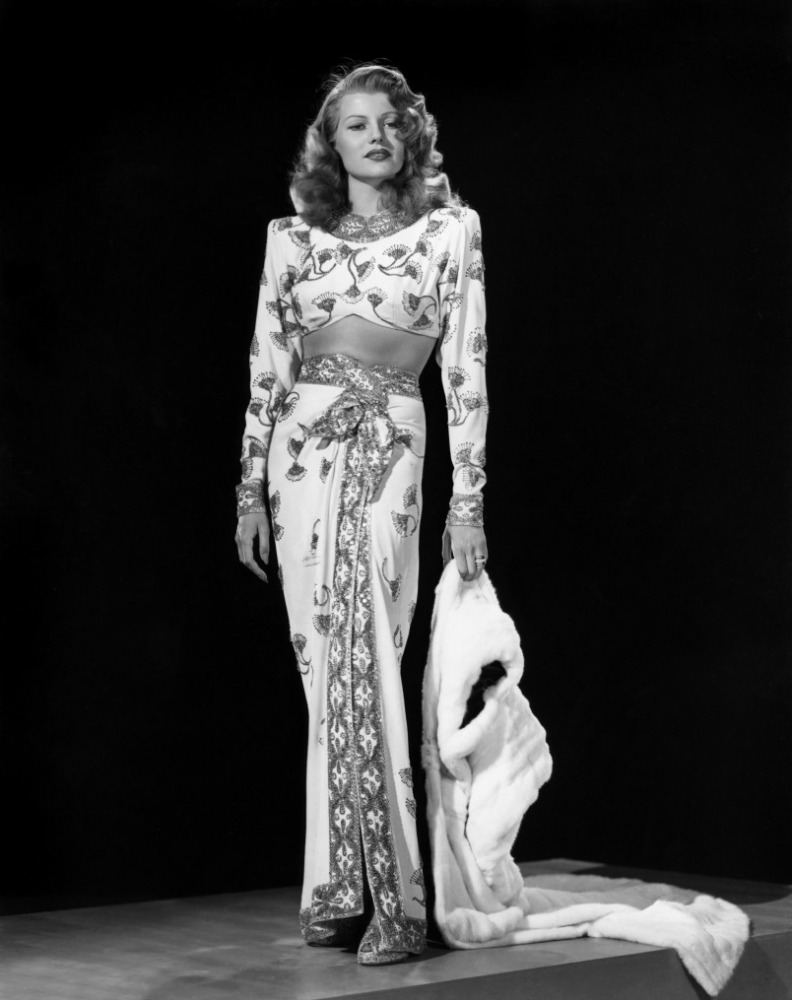
Next, Gilda makes a call and runs away from Argentina (and her creep of a second husband) to go back to her performing roots at nightclubs in New York. Above is the ‘Amado Mio’ outfit, my personal favourite in the film: a midriff-baring white and gold embroidered two-piece featuring a wrap skirt and open-back top with dolman sleeves and gold embroidered peep toe pumps. It’s incredible. You have to see the sequence to fully appreciate it—and those legs!
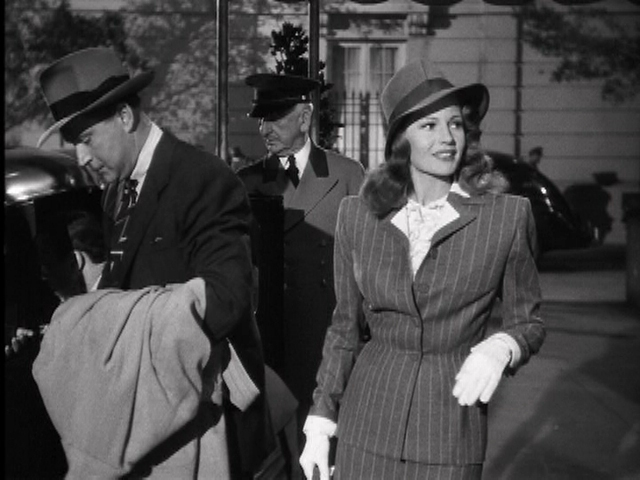
Gilda meets a man at the nightclub (who is actually Johnny’s man hired to bring her back), who she believes wants to “save” her from her husband. She returns with him to Buenos Aires in a slick pinstriped skirt suit with an interesting pointed collar, wide structured shoulders, a hat and white gloves. She will don this outfit a second time in the final scene of the film when she leaves Argentina for the last time.
If you didn’t already feel sorry for Gilda, this is the part where you do because everyone she puts her trust in betrays her. Up until around this point in the film, we are led to believe Gilda is a cold, heartless seductress, but now we learn she was only pretending. She has a quick breakdown and then returns for the most famous scene of the movie (which was apparently only an afterthought, and when you watch the film it will look exactly like that) to get back at Johnny the only way she knows how.
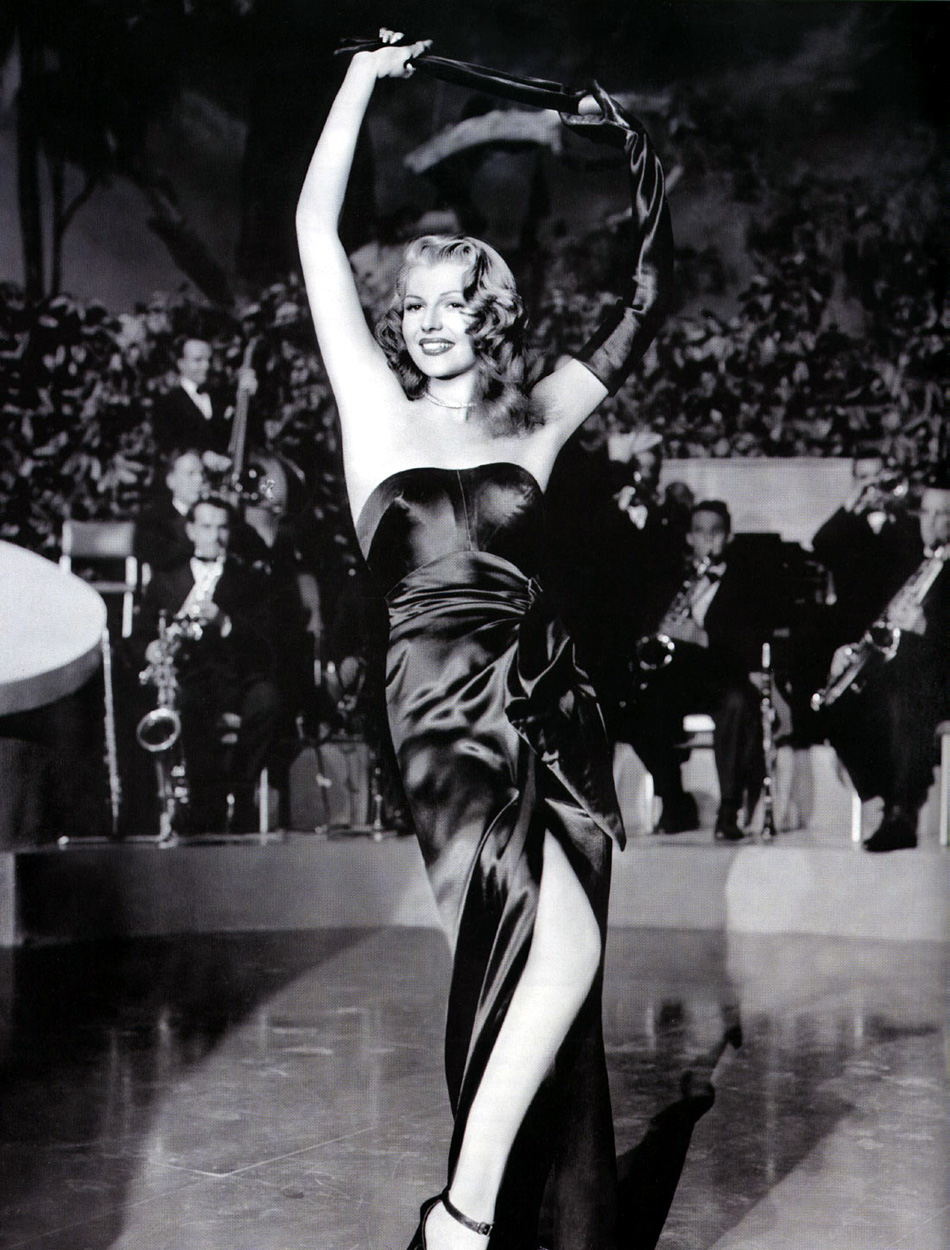
Above is Gilda’s performance at the casino for the ‘Put the Blame on Mame’ dance/striptease in this strapless black satin gown with a big bow on the side, matching long satin gloves and ankle strap pumps. Check out the cone breasts (very 1940s…) and the way the gown looks like it will just slink off her body while she’s dancing. It gives me anxiety every time.
According to Jean Louis, he put a harness inside the top of the gown to support her, and is quoted as saying, “Poor Rita. She was rehearsing so hard her feet were bloody, but the dress did not fall down.”
As long as we have our priorities straight, right? Right.
Sources:
- Classic Hollywood Style by Caroline Young


